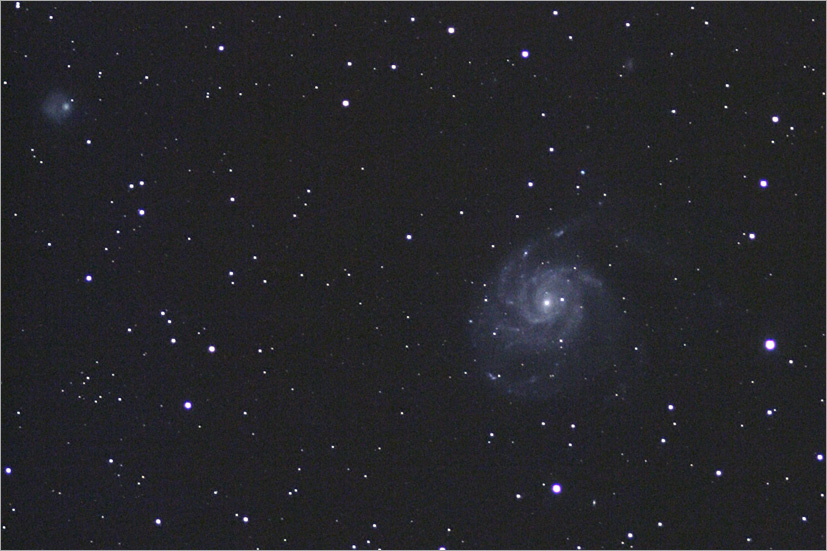
Tracked and Stacked
Galaxy M101
Galaxy M101 is reasonably large for a galaxy, but has very low surface brightness.
This means you need to shoot it from a dark-sky observing site, and stack exposures to increase the signal-to-noise ratio.
|
|
M101 is a classic face-on, grand-design, spiral galaxy.
NGC 5474, a smaller 11th magnitude galaxy, is also visible at upper left in the frame.
M101 is located about 27 million light years away in the constellation of Ursa Major. Its apparent size is about 22 arc-minutes on long-exposure astrophotos, and is estimated to have a true diameter of 170,000 light-years, about twice the size of the Milky Way. M101 has a mass of about 100 Billion suns.
Although its total apparent visual brightness is mag 7.9, its brightness is spread out over a large area, giving it a low surface brightness.
Galaxy M101 was discovered by Pierre Mechain on March 27, 1781. It was one of the first "spiral nebulas" identified. These spiral nebulas were first though to be part of our own galaxy, but later were discovered to be separate galaxies in their own right.
Image Data
- Lens / Scope: Stellarvue SV70ED ED doublet refractor
- Focal Length: 420mm
- F/stop: f/6
- Exposure: Stack of five 2.5-minute exposures (12.5 minutes total exposure)
- Mount: Orion Sirius polar-aligned German-equatorial mount
- Guiding: None
- Camera: Unmodified Canon EOS 1000D (Digital Rebel XS)
- Mode: JPEG
- ISO: 1600
- White Balance: Custom, set on sky background
- In-Camera Noise Reduction: Off
- Filter: None
- Temp: 44F
- Start Time: 12:35 a.m.
- Date: April 24, 2009
- Location: Tuckahoe State Park, MD
- Calibration: None
- Processing: Standard in-camera JPEG processing. Stacked in Deepsky Stacker. Contrast increased and noise reduction applied in post processing.